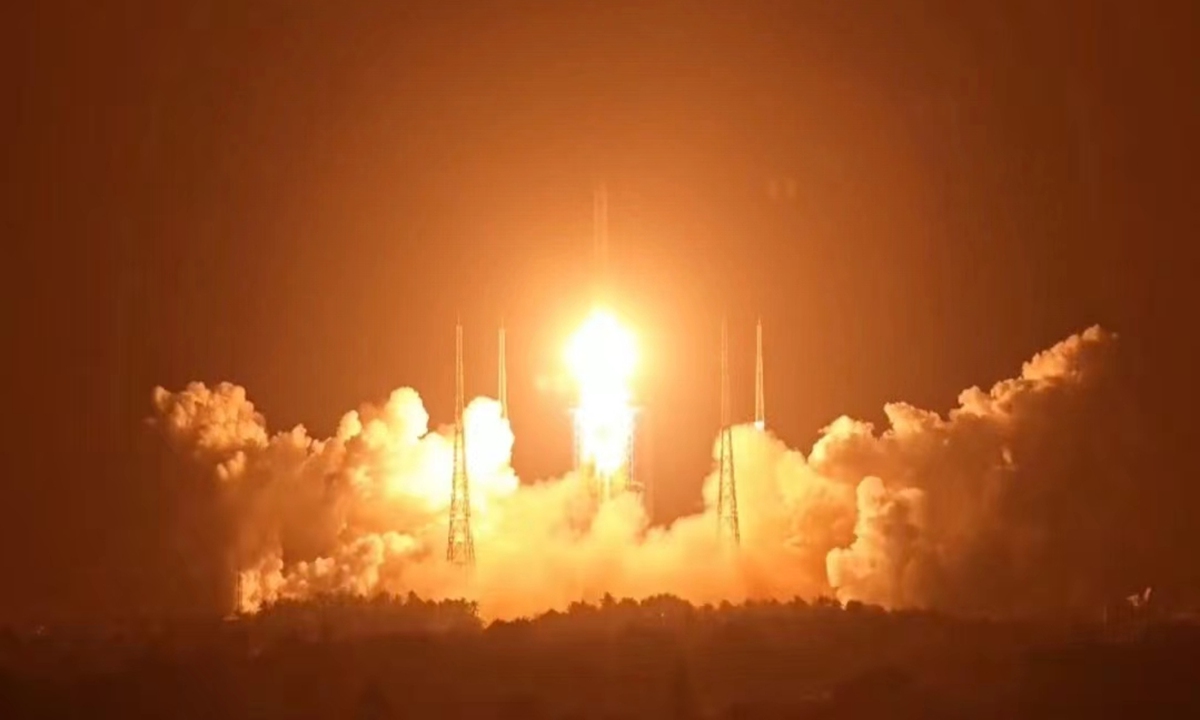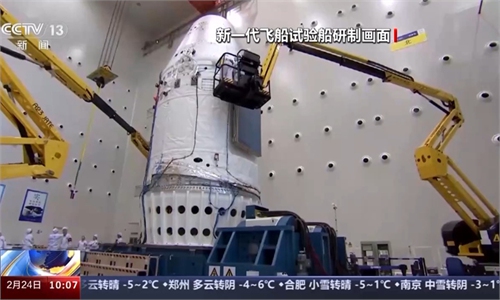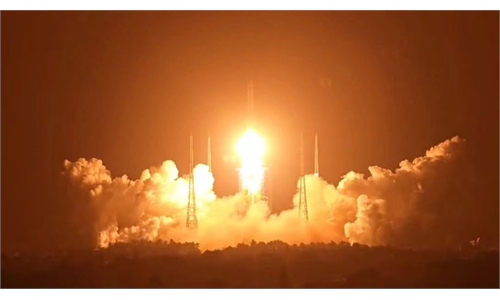
The Long March-5 is launched from the Wenchang Space Launch Site in South China's Hainan Province on Feb. 23, 2024. Photo: courtesy of Sun Handong
China's space development is set to witness new milestones in 2024 with around 100 orbital launches expected to take place, setting a new record and accelerating the networking and construction of multiple satellite constellations, according to the annual blue paper released by China's state-owned space giant China Aerospace Science and Technology Corporation (CASC) on Monday.
The CASC blue paper (2023) pointed out that as the year 2024 marks the 75th anniversary of the founding of the People's Republic of China, it will be a crucial year for fully implementing the spirit of the 20th National Congress of the Communist Party of China, vigorously achieving the goals and tasks of the 14th Five-Year Plan (2021-25), and accelerating the construction of a space power.
According to a statement the CASC sent to the Global Times on Monday, it has scheduled nearly 70 orbital launches for 2024, aiming to send some 290 spacecraft into space.
Among the missions, newly-developed Long March-6C and Long March-12 carrier rockets will execute their maiden flight missions.
The China Space Station has entered the normal operation stage and within 2024, there will be two cargo spacecraft missions, two manned spaceflight missions and two return missions, per the CASC.
China's first space launch site especially for commercial use is also expected to have its first launch mission in 2024.
Also, China's much-anticipated Phase-4 lunar probe mission will see new progress including the launch of the Queqiao-2 relay satellite and Chang'e-6 mission, which is expected to carry out the world's first lunar sample returning mission in the South Pole-Aitken Basin on the far side of the moon.
Satellites for civilian use purposes including the ocean salinity detection satellite, electromagnetic monitoring satellite 02, and the China-French astronomical satellite (SVOM), will also make their launches in 2024, CASC said in the statement, while stressing that work to push forward the building of the CASC new-generation remote sensing satellite is being accelerated.
The blue paper also reviewed the country's space development in 2023, saying that 67 launch missions were carried out, ranking second in the world, and 221 spacecraft were developed and launched, breaking Chinese records for launch frequency and spacecraft quantity.
Among them, the Long March series of carrier rockets successfully launched 47 times with a perfect success rate, breaking through 500 launches cumulatively, and other commercial rockets launched 20 times.
Looking back on the past year, China's space industry has implemented high-density launch missions in an orderly manner with a high success rate, and the number of spacecraft developed and launched has rapidly increased, with a significant improvement in development capabilities, the CASC said.
In terms of international cooperation, China's space industry has carried out various forms of international exchanges such as exchanges, discussions, data sharing, technical cooperation, application services, and space culture education, promoting the high-quality development of the China-proposed Belt and Road Initiative, and contributing to the building of a community with a shared future for mankind.
In 2024, CASC will maintain a high-intensity research and development mission, comprehensively advancing projects such as manned lunar exploration, deep space exploration, and the development of over 200 spacecraft including the new generation of near-Earth manned spacecraft, Chang'e 7 lunar probe, Tianwen 2 probe, and geostationary orbit microwave detection satellites, while vowing to guarantee the production of over 230 carrier rockets and the implementation of various commercial aerospace contracts and satellite export agreements.
The China Manned Space Agency (CMSA) on Saturday unveiled the names of the new vehicles for future manned lunar exploration missions. The new manned spacecraft is named Mengzhou, which means "dream vessel". The lunar lander is named Lanyue, which means "embracing the moon".
China plans to land its taikonauts on the moon before 2030 to carry out scientific exploration.



